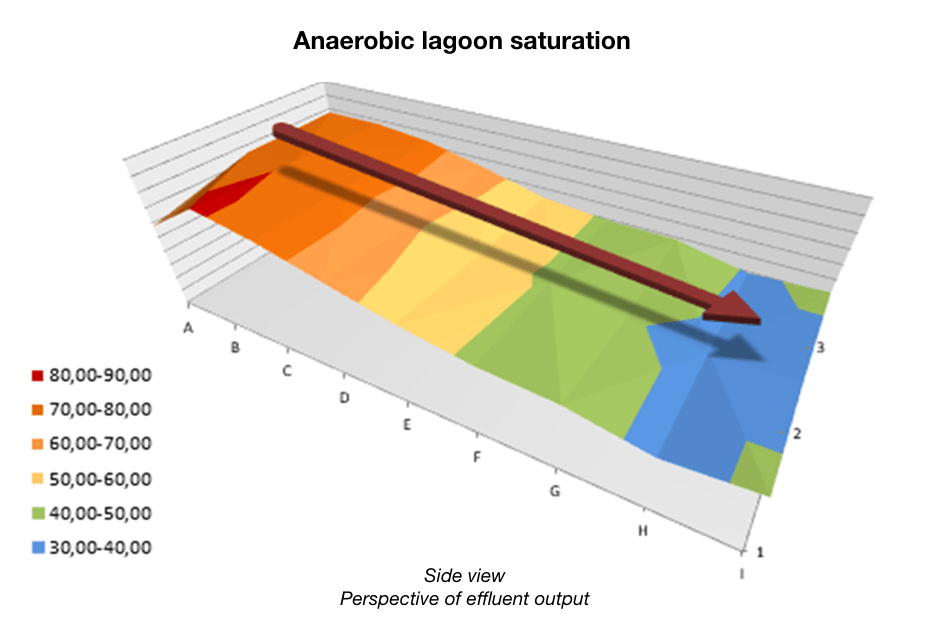It is an engineering technique used to measure the liquid and sludge layer of effluent treatment ponds (sanitation or industrial), in order to know the degree of saturation and the topography of these locations.
Bathymetry
What is it?
Why is this technique considered a distinguishing feature?
Brazil’s history in sanitary sewage and industrial effluent treatment systems is characterized by the use of stabilization ponds. Most of the existing ponds of both public and private companies, over time, collapse or almost collapse. In other words, they contain more solid material (sludge) than liquid (effluent to be treated) inside, which makes these systems inefficient and imposing serious bad odor problems.
In order for us to be able to propose Enzilimp solutions to our customers, contributing to the total resolution or minimization of these problems, it is necessary to know the degree of saturation of these locations and, subsequently, to monitor the evolution of the results.
To meet this demand, Millenniun has a structure of equipment, vehicles and a qualified team to perform this service to its customers.
How is the measurement performed?
The measurement is made using a vessel, and the positioning for control is carried out with special markers, for later comparison before and after the treatment with the application of Enzilimp solutions.
Bathymetry in ponds
Arrangement of the measurement point grid. 96m x 23m pond.
The bathymetric survey is achieved through a GPS-equipped echobathimeter, sludge measuring equipment and a vessel to move across the surface of the lakes to define the grid of measurement points and capture the sludge and water depth measurements.
To carry out the bathymetry, the lakes are divided into equidistant parts using marked ropes (below), forming matrices.
Marking and identification of equidistant measuring points.
Based on the scope of work to be proposed, the number of matrices to be demarcated will be defined. In the case below, we demonstrate a bathymetric survey carried out in sanitary sewage stabilization ponds.
During bathymetry, several sludge samples are collected at different points of the pond, enabling a detailed analysis of the physicochemical composition of the sludge present.
Measurements are noted in tables, and the result of the compilation of calculated values is illustrated by means of graphs.

Bathymetry allows us to:
- Identify the situation of ponds, their morphology and their biodegradability conditions. This survey will support the study to define the methodology to be adopted in the recovery or deactivation of the ponds and lagoons.
- Carry out measurements of volume and thickness of the water depth, volume and thickness of the elevated sludge layer, average depth, minimum and maximum depth.
- Calculate the degree of saturation of the pond and represent it using graphic images.
- Calculate the hydraulic retention time (HRT) of the ponds.
- Check the physicochemical characteristic of the sludge by performing the solids analysis (Total Suspended Solids, Fixed Suspended Solids and Volatile Suspended Solids) and determine the degree of biodegradability of the sludge, i.e., organic sludge volume (biodegradable) and volume of inorganic sludge (inert-non-biodegradable).
- Verify the treatment efficiency of the ponds through physicochemical analyses.


